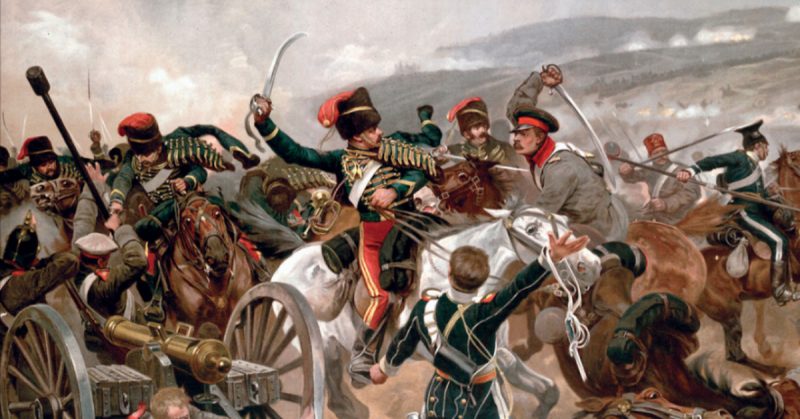When Scarlett and his three hundred cavalrymen crashed into the midst of the Russians, it was like a tornado had hit them.
The battle of Balaclava, which took place on October 25, 1854 and was one of the main battles of the Crimean War, is almost universally remembered for being the battle in which one of the greatest military blunders in history, the charge of the Light Brigade, took place.
However, another significant cavalry charge also took place during this battle, one with a decidedly different outcome to the ill-fated Light Brigade’s charge. The charge of the Heavy Brigade, which has been all but forgotten by history, pitted some three hundred cavalrymen of the British Heavy Brigade against a force of over two thousand Russian cavalry troops.
The British cavalrymen who took part in the charge of the Heavy Brigade – which consisted, in this charge, of the Inniskilling Dragoons, the 1st Dragoon Guards, the 4th and 5th Dragoons, and the Scots Greys – at Balaclava were primarily armed, as the men of the Light Brigade were, with sabers.
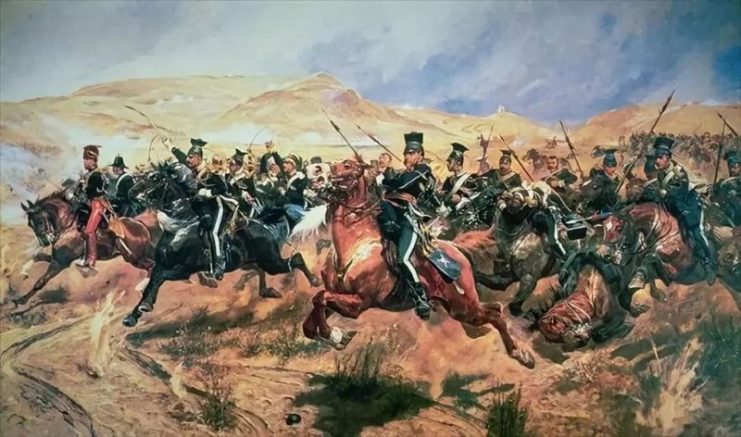
Some may have carried carbines as well, and officers would likely have carried revolvers, but sabers were nonetheless their primary weapons. Lances, another primary weapon of 18th and 19th century British cavalry forces, were generally only carried by light cavalry regiments, such as the 16th and 17th Lancers.
While the differences between heavy cavalry and light cavalry had been more marked in the 18th century and early 19th century, by the time the Crimean War broke out in 1854 the differences between these types of cavalrymen were less obvious.
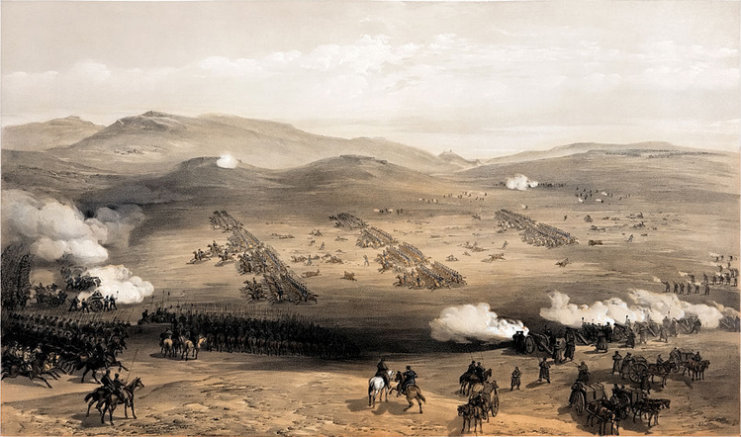
Formerly, heavy cavalry had mainly performed the role of shock troops, whose function was to smash through enemy lines and sow terror among the ranks. As such, they were generally big men, often partially armored with breastplates and steel or brass helmets, and they rode large, powerful horses and carried heavier sabers.
Light cavalry had previously performed more of a scouting function, as well as the pursuit of fleeing enemies, and had consisted of smaller men on lighter, faster horses.
However, by the middle of the 19th century the line dividing the light and heavy cavalry regiments had become quite blurred, and they were not as distinctly different as they had previously been in terms of men, horses, functions, and arms.
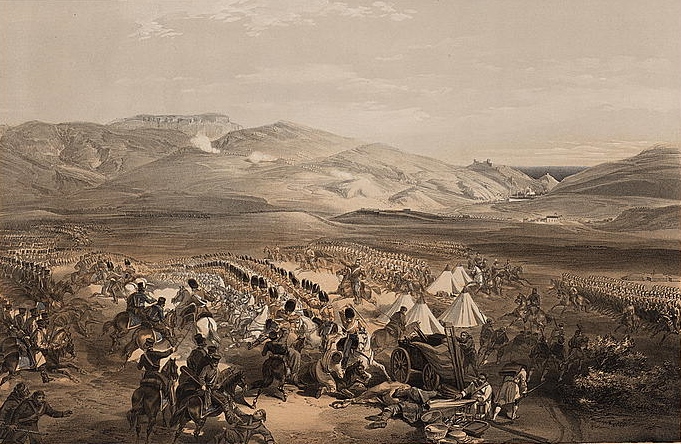
Still, for most of these cavalrymen their primary function in battle was to charge into the enemy and inflict as many casualties as they could with their sabers and lances – and this is exactly what the men of the Heavy Brigade did on the 25th of October, 1854 at Balaclava.
The Heavy Brigade was commanded at this time by Major-General Scarlett, an elderly gentleman on the eve of retirement, who up to this point in his career had not yet seen action in battle.
Despite his lack of actual battle experience, Scarlett did not hesitate to order a charge when his Heavy Brigade, which had been ordered to assist Sir Colin Campbell’s defence of the town of Balaclava, came across a force of Russian cavalry 2,000 strong.
https://youtu.be/k-fOVM_TU_M
The Russian force appeared at the top of a hill and began advancing toward the British Heavy Brigade at a trot, confident of an easy victory due to their overwhelming superiority of numbers and the fact that the British were downhill from them.
Despite the rough ground that stood between the British and the Russians, Scarlett ordered a charge, leading his men from the front. Because they were going uphill and over uneven ground, the “charge” was more like a fast walk – but when Scarlett and his three hundred cavalrymen crashed into the midst of the Russians, it was like a tornado had hit them.
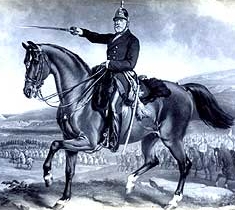
The British troops, badly outnumbered, fought with the fury of men possessed. As another force of four hundred British heavy cavalry smashed into the Russian flanks, Scarlett and his men hacked, stabbed and slashed their way through the Russian ranks, eventually scattering the Russian cavalry and forcing them to retreat.
Despite the overwhelming odds against them the British Heavy Brigade won a resounding victory. Russian losses were 40-50 killed, and well over 200 injured, while 10 British cavalrymen were killed and almost one hundred wounded. Scarlett survived the battle with five saber wounds and a dent to his helmet, and was promoted to the rank of general. He was then knighted in 1855.
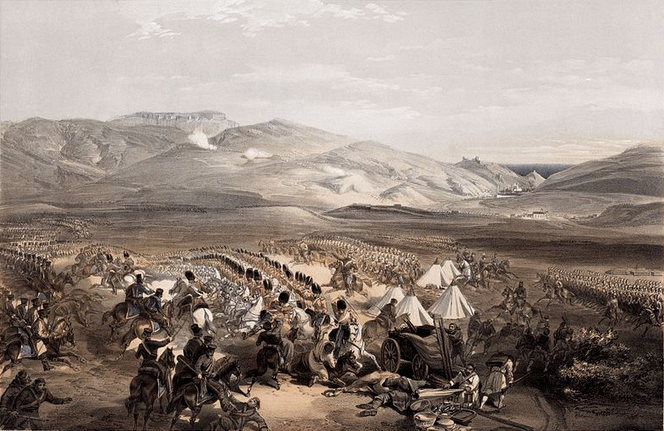
Read another story from us: How the British Empire Starved Its Soldiers In the Crimea
The British could have inflicted even greater casualties on the Russians had the Light Brigade been unleashed on the fleeing Russian cavalrymen, but due to a miscommunication, this was not done. Then, of course, the Light Brigade was to become involved in a tragedy of epic proportions a few hours after this engagement – one which would completely overshadow the victory the Heavy Brigade had achieved.
Scarlett’s battle-dented helmet from the Charge of the Heavy Brigade remained as an heirloom in his family after his death in 1871, until in 2004 it was donated to the Royal Dragoons Museum, where it remains on display.
